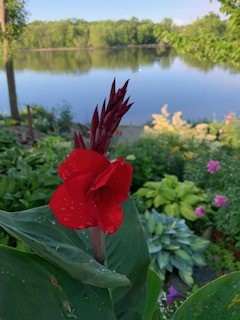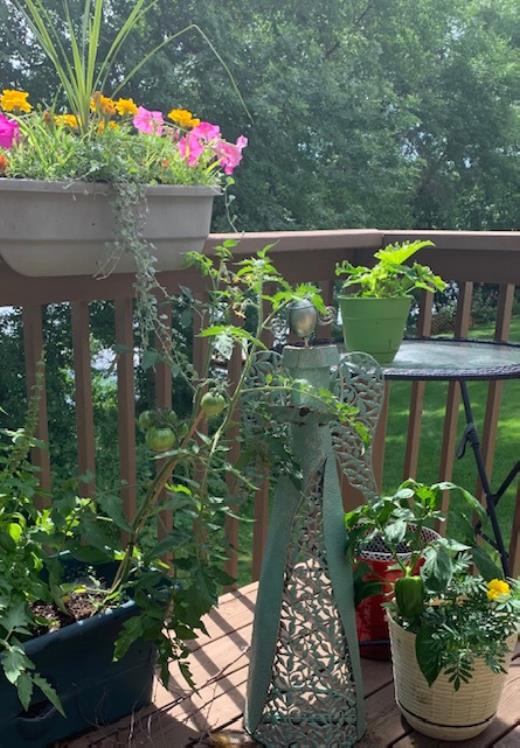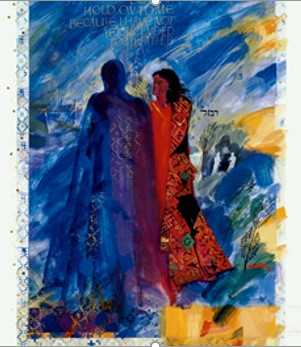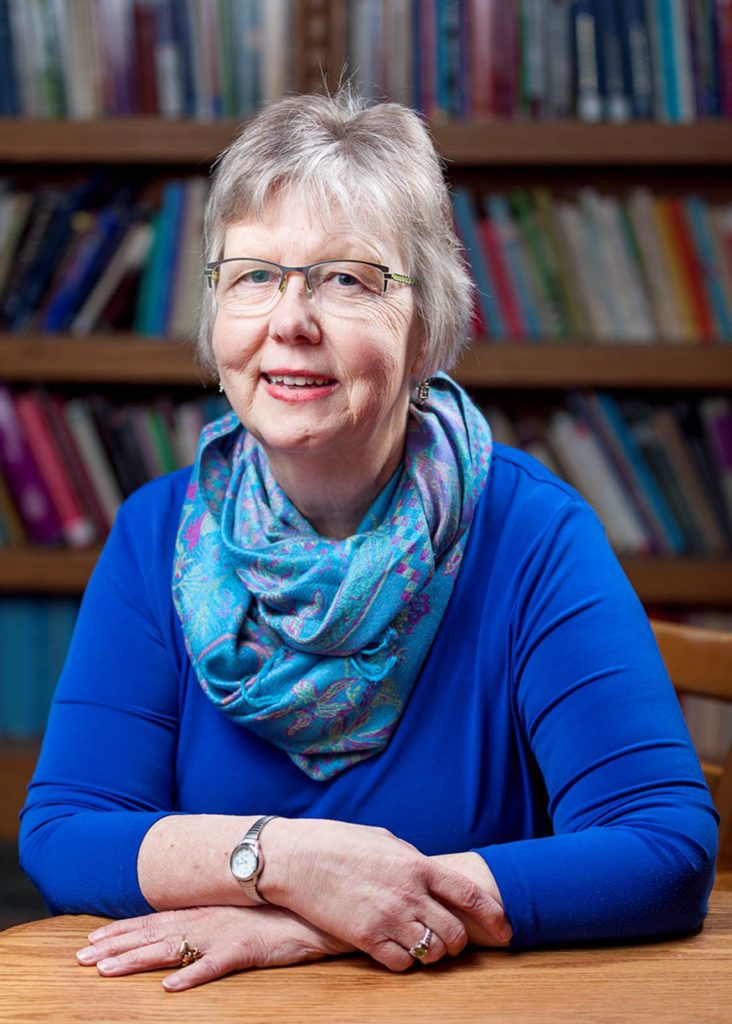“Into the Garden” (by Barbara Sutton)

Here in Central Minnesota, I am lucky to have a beautiful small garden on the banks of the Mississippi River. I have tended this garden for ten years. Right now, it is filled with blooms—Lilies, Bee Balm, Canna, Corn flowers, Phlox, Black-eyed Susans, and Hosta scapes that seem to shake their one finger at everyone.
Growing up our family garden only meant one thing to me: WORK! Mom had a quarter-acre vegetable garden that yielded food to be frozen and canned for the next 365 days for a family of eleven. I did it because I was told to, but I didn’t like it. Every summer morning, I would mistakenly ask, “What are we going to do today?” And I would be assigned my rows to weed. Later in the season, the answer to my daily query became what vegetables to pick and then prepare for the long winter ahead.
My happy place in this garden was on the sidehill where I would sit with numerous wildflowers that volunteered to live here. They made life look so easy—just showing up! They were my cheerleaders, bright, colorful, and dancing to the mood of summer days. Wanting to share them, I would decorate little baby food jars, and arrange them into a new vase to decorate our farmhouse. Mind you, they were usually returned back outdoors, to decorate a windowsill.

My mom is probably smiling down at me this summer because for the first time I dared to plant tomatoes and bell peppers in container gardens, and yes, they are bearing fruit!
Last summer, in anticipation of the Feast of Saint Mary of Magdala on July 22 each year, I turned once again to my practice of visio divina with the illumination of The Resurrection in The Saint John’s Bible. The words from Scripture resonated deeply with me during lectio divina: Jesus said to her, “Woman, why are you weeping? Whom are you looking for?” She thought it was the gardener…” These words fondly became the source of my Magdala Moment, a moment when, like Mary encountering the Risen Christ, I saw life so differently: my garden as contemplative space held not only by me, but also the blooming flowers, the whispers of the river, and the geese who parade multiple times a day through the yard and on the river. It is holy space. In that moment I decided to turn my reflection into action and invite some women to the garden on July 22 for refreshments and prayer. Each would bring something that reflected a Magdala Moment for them. With full hearts, they brought stories, art, and poetry. We formed a Magdala Circle with a commitment to meet each year at the river’s edge to tell stories of faith and friendship, to seek the intercessions of Mary of Magdala and the Master Gardner.

Collegeville, Minnesota USA. All rights reserved.
In anticipation of the July 22 feast day this year during the pandemic, stumbling through preparations for a socially distanced Magdala Circle, I realized that for me this day was going to also celebrate Easter! It was there in the garden that the tomb stone was rolled away and Mary of Magdala meets Jesus, resurrected. In this illumination, they simply hold each other’s face in their hands! I imagine they were both equally delighted. The gold space between them says it all—the love of God that permeates this Easter morning, this Easter gathering in the garden. I have been holding tomb space for a seemingly l o n g Holy Saturday that has not culminated in a liturgical celebration of Easter during the pandemic lockdown. This ritual of gathering with friends for the Magdala Circle had at least six feet of gold space between and among us! How delightful is that? Six feet of gold. And we tenderly held this ritual space for one another because we are Easter people!

Barbara Sutton works extensively with the illuminations of The Saint John’s Bible through retreats, workshops, publications and preaching. Barbara is the Director of Field Education and Ministerial Formation at Saint John’s School of Theology and Seminary, Collegeville, MN. She utilizes contemplative prayer, visio divina, and expressive arts as her spiritual practices.

I would sing a song from my native island on the gift of a flower from a tree.
Lovely, Barbara.
I remember your visit to St. Scholastica Monastery and the Holy Week Retreat, a year ago,
a wonderful experience. I love this illumination, too. Thanks for reminding me about the
meaning of the gold. May the rest of your summer days be “golden.”
Blessings
P.S. I think you may also know that July 22nd is Founders Day for most Benedictines in the U.S.
It is the day Mother Benedicta and Sisters Maura and Walburga arrived in St. Mary’s Pennsylvania, to form the first Benedictine community in the U.S. So we are doubly blessed on that day.
Thank you S. Beverly for adding more gold to July 22 as Founders Day! I am so glad the Sisters and you are are safely sheltered in place! Every time I see a Monarch butterfly in the garden, I think of you and your science wisdom.
Barbara, beautiful reflection! Ever grateful for your sharing the fruits and graces of Visio Divina! The Living Word of Scripture takes on even more LIFE as the SJB is opened again, and again! All of our senses are coaxed into movement when engaged with the Illuminations and the graces flowing from the encounter! Summer blessings as August unfolds!